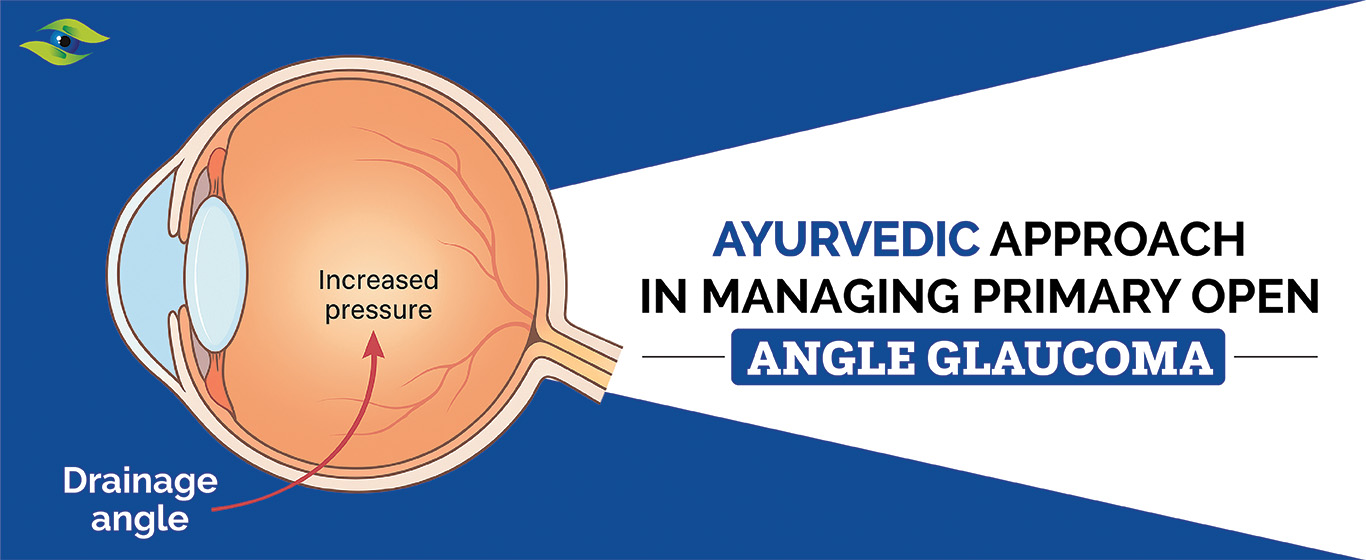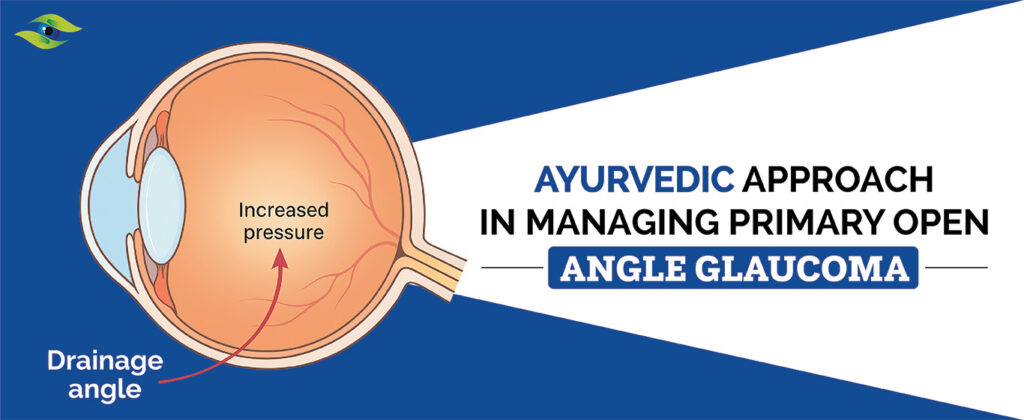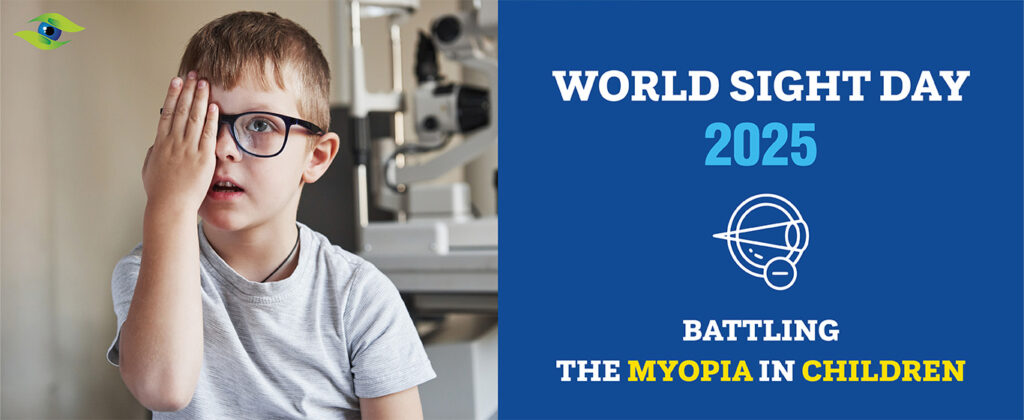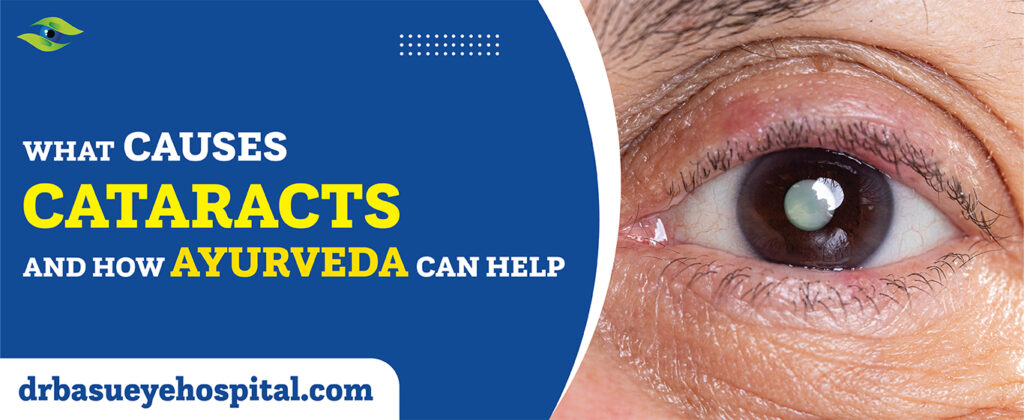Talking about glaucoma, the most common type, Primary Open Angle Glaucoma (POAG), is one of the most common and challenging eye disorders worldwide. It is a long-term and progressive optic neuropathy disorder that slowly damages the optic nerve. When left untreated, it may ultimately lead to complete vision loss.
Though with advancements in modern ophthalmology, allopathic approaches to glaucoma treatment, which include giving medicated eye drops, laser therapy, or surgery, have restrictions like dependency, possible side effects, and the inability to restore the percentage of vision loss. This has been the key reason for the increasing interest in Ayurvedic and integrative management methods, which aim to address the root cause of the disease and maintain all-around bodily balance for improved long-term outcomes.
Glaucoma Symptoms: Early Signs You Shouldn’t Ignore
In layperson’s terms, glaucoma occurs when the fluid pressure inside the eye, also known as intraocular pressure (IOP), increases and begins to damage the optic nerve. In Primary Open-Angle Glaucoma, the drainage angle remains open, but fluid fails to drain efficiently, resulting in pressure buildup. Common glaucoma symptoms include:
- Colored rings or halos around light
- Vision becomes blurry.
- tunnel vision with time
Unfortunately, many patients remain unaware until considerable vision loss has occurred. That’s why early detection through regular eye check-ups is crucial for timely glaucoma treatment and preserving vision.
Ayurvedic View on Glaucoma
As per ayurveda, glaucoma is closely associated with conditions like Adhimantha or Timira, which occurs because of imbalance in Vata and Pitta Gunas. This imbalance affects the Drishti (vision) and the function of the optic nerve.
The Ayurvedic study reveals that eye health is closely linked to overall systemic balance, encompassing mental health, blood circulation, and digestion. Therefore, Ayurvedic glaucoma treatment focuses not only on reducing intraocular pressure but also on improving metabolism (Agni), detoxifying the body, and rejuvenating the optic nerve through Rasayana (rejuvenative therapies)
How Ayurveda Supports Glaucoma Treatment Naturally
An integrative Ayurvedic approach can play a significant role in managing glaucoma symptoms and treatment effectively. In many cases of Primary Open Angle Glaucoma (POAG), by combining Ayurvedic therapies with modern treatment, outcomes can be enhanced and can better stabilize the disease pattern.
Ayurvedic treatment focuses on keeping the body in balance and removing harmful waste from it. It also helps improve blood flow and keeps the nerves of the eyes healthy. Ayurveda uses special therapies like Shiro Virechana (cleansing through the nose), Tarpana (eye nourishment with herbal ghee), and Rasayana (herbal tonics to make the body strong). When these treatments are used along with regular eye medicines, they help improve eyesight, control eye pressure, and keep the eyes healthy for a long time.
Ayurvedic Line of Management
In Ayurveda, glaucoma treatment is done using both internal and external therapies to keep the body and eyes healthy. Some medicines are given to improve digestion and make the body stronger. Special treatments help in cleansing the body and removing waste. One such therapy is Shiro Virechana, which means cleaning the head and nose area to remove toxins. Another important treatment is Tarpana, where a warm herbal ghee is kept around the eyes to give them strength and nourishment. Along with these, Rasayana medicines are given for a few months to make the eye nerves strong and slow down further damage. This combined Ayurvedic plan helps to keep the body balanced, improve eye health, and support better vision in the long run.
After a few months of treatment, patients have shown a clear improvement in eyesight in both eyes. The eye pressure also decreases to a more optimal level, which is very important in glaucoma. The eyes become more sensitive to light and can see better. The blood reports start to become normal, and even the fat level (triglycerides) in the blood gets reduced.
Why Combine Ayurveda with Modern Glaucoma Treatment ?
It has been observed that Ayurvedic glaucoma treatment is combined with modern medical approaches. Modern medications have shown the ability to regulate eye pressure, while Ayurveda addresses the entire body. It helps to balance the body, improve blood flow, and strengthen the nerves of the eyes.
Ayurveda employs specialised methods, including cleansing the body (Shodhana), strengthening the body (Rasayana), and eye therapy (Tarpana). These treatments help slow down the disease, protect eyesight, and maintain eye health for an extended period.
Conclusion:
Glaucoma is a lifelong condition, and the best outcomes are achieved through early diagnosis, consistent monitoring, and integrative care. While modern ophthalmology focuses on IOP reduction, Ayurveda complements it by addressing systemic factors that influence optic nerve health. Patients experiencing glaucoma symptoms such as blurry vision, eye strain, or peripheral vision loss should consult a qualified Ayurvedic practitioner for a personalized glaucoma treatment plan.






